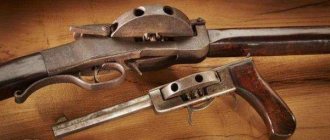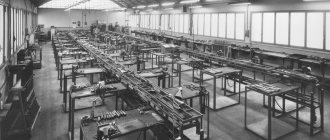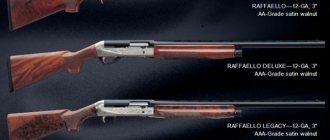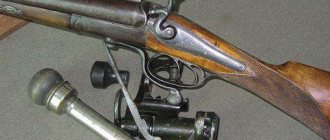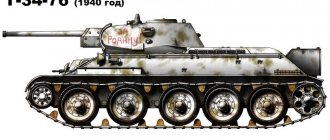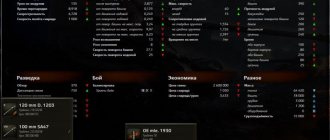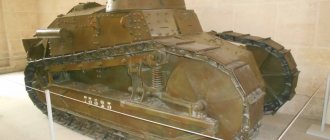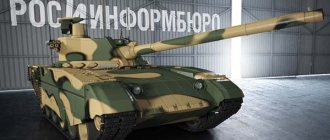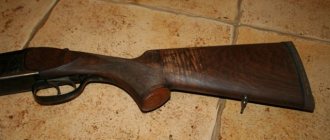It seems to civilians that nothing can hit a tank except a mine, a cannon or a grenade. However, there used to be another means - a powerful gun chambered for a large-caliber cartridge, called an anti-tank
The history of anti-tank rifles is as short as a shot, and is an example of a rapid triumphant takeoff and an equally rapid disappearance from the battlefield. In less than half a century of use, anti-tank rifles have proven to be very effective, and not only against tanks. At the same time, ironically or simply because of skepticism, the military has always expressed distrust of this type of weapon, which literally “stretched out” the Soviet anti-tank defense of rifle units in the difficult years of 1941 and 1942. Today our story is about anti-tank guns and those who operated them - armor-piercing soldiers.
"Tankgewer" against steel monsters
The First World War became the theater of baptism of fire for a new weapon - tanks. By the end of the war, avalanches from hundreds of armored vehicles rolled into German positions. Germany, which did not pay enough attention to the creation of tanks, took the path of countering the new threat through the creation of anti-tank weapons. An anti-tank gun, factory-made grenade clusters, and a Tankgewer M1918 anti-tank rifle, or Mauser T-gewer.
Tankgewehr M1918
Source: pinterest.ru
This is a heavy (almost 18 kg) rifle chambered for the new 13 mm machine gun cartridge. The machine gun itself, however, did not have time to be produced en masse, but the rifle turned out to be easy to manufacture and quickly took root among the troops. Each company had such a deadly “club”, and in total, before the end of the war, the German infantry received more than 15 thousand of these rifles. And now the armor of the tanks, which had previously been invulnerable to gunfire, was hit by serious bullets that could penetrate any tank of that time at a distance of 300 meters. This was quite enough for the trench conditions of war, but the armor effect of the bullet, if it did not hit the crew, turned out to be low. The war ended, and gunsmiths did not have time to develop a new threat to tanks. But a new big war was approaching.
Design Features
The self-loading PTRS operated according to a scheme with the removal of powder gases. It consisted of a barrel with a muzzle brake and a gas chamber, a receiver with a butt, a bolt, a trigger guard, reloading and trigger mechanisms, sights, a magazine and a bipod.
Butt
The PTRS had a wooden butt and a pistol-type grip. On the butt plate there was a shock absorber (the so-called “pillow”), which softened the recoil effect. The neck of the butt was used to hold the weapon with the left hand.
Nutrition
The gun was fed through an integral magazine. The box-shaped double-row magazine with a hinged bottom cover and a lever feeder had a capacity of 5 rounds. Loading was carried out from below, with a metal clip with cartridges arranged in a checkerboard pattern. Firing could only be carried out in single shots.
Automation
The PTRS automation worked on the principle of removing part of the powder gases through a transverse hole in the barrel wall. The design had a three-position gas regulator for dosing gases discharged to the piston, depending on operating conditions. The barrel was locked by skewing the bolt frame in a vertical plane. for carrying. The impact mechanism is hammer-operated, with a screw mainspring.
Trunk
The barrel had eight right-hand rifling and was equipped with a muzzle brake. A folding bipod and a carrying handle were attached to the PTRS barrel.
Fuse
The trigger mechanism provides fire only in single shots. When the cartridges are used up, the bolt stops in the open position. Flag fuse.
Sighting mechanism
The PTRS sight was an open sector type and was designed for combat distances from 100 to 1500 meters. The sectors of the sighting device had values from 1 to 15, each of them corresponded to 100 meters of distance. The sighting device also included a front sight with a muzzle.
PTRS cartridges had a caliber of 14.5 mm
Between the wars
The Germans' experience did not go unnoticed. Perhaps the most interesting example of the development of such weapons was the project of the English captain Boyce. The experience of the Spanish Civil War showed that despite the presence of artillery and machine guns of various types, infantry required light and less noticeable anti-tank weapons. And taking into account the fact that at that time powerful PTR cartridges still perfectly penetrated tanks with bulletproof armor, of which there were the majority, the conclusion was obvious.
PTR Boyce
Source: pinterest.ru
Boyce developed a gun, which he called the Elephant gun, but it went down in history under the name of the captain himself. Boyce abandoned the 12.7 mm cartridge for the Vickers machine gun and chose the most powerful 13.9 mm cartridge. The Boyce turned out to be quite successful: the top-mounted 5-round magazine and comfortable ergonomics were perfect for the shooter. But the armor penetration was not very good. It was necessary to shoot from 100 meters, otherwise the effect was sharply reduced.
Finnish Lahti, you can estimate the size
Source: pinterest.ru
Separately, we can note the use of “Boys” by the Finns during the Soviet-Finnish War. The Boyce tandem with their own Lahti anti-tank rifle at a monstrous 20 millimeters (often this gun could injure the shooter) performed well. The guns were used for shooting both at vehicles and at embrasures, fortifications, and were used as an anti-sniper option.
German PzB 39
Source: pinterest.ru
Research was also carried out in Poland. Their famous “secret” Ur gun (ostensibly for shipment to Uruguay) performed well in the fight against German light tanks and armored cars in 1939. And the Germans also had their own version of the PzB-38 “Panzerbühse”. Both guns eventually served in the Wehrmacht, but their caliber 7.92x108x94 left them no chance in the further course of the war.
History of the anti-tank rifle (Part 1)
Methods of warfare improved as society developed. Huge amounts of money were invested in the development of means of warfare. And the twentieth century does not stand out much from the general background - there are only more victims and more destructive consequences of the use of weapons. Combat tactics, weapons and means of defense changed, but one thing remained unchanged - the confrontation between the projectile and the armor.
Until the beginning of the 20th century, almost all military companies used maneuver warfare tactics. They switched to positional warfare only during the siege of fortresses. For military theorists, it seemed unshakable that the outcome of the war would be decided by attacks by cavalry corps and massive infantry attacks. They did not notice the birth of new types of weapons. The machine gun, which appeared on the battlefield during the Boer War, showed all its capabilities during the siege of the Port Arthur fortress. The small number and discovered design flaws could not hide the high effectiveness of the machine gun in repelling attacks. Qualitative changes are also taking place in artillery. Equipping the guns with semi-automatic bolts and unitary projectiles resulted in an increase in the rate of fire to 9-12 rounds per minute (and in some cases up to 16-18).
The First World War, which began in 1914, at the first stage seemed to justify the theorists’ expectations from the General Staff. But already in 1915 the situation changed dramatically. Machine-gun fire thwarted all attempts by infantry and cavalry to attack enemy positions. And it was not for nothing that the famous “three-inch” was nicknamed the “Death Scythe”. Rapid fire from shrapnel shells inflicted terrible losses on the advancing infantry in chains. The situation at the fronts has changed. The infantry dug into the ground and surrounded their positions with thick rows of barbed wire. I had to forget about the dashing cavalry attacks. And the infantry attacks began to resemble an attempt at mass suicide. For every kilometer of positions captured from the enemy, the attacking side paid with tens of thousands killed and a huge expenditure of ammunition. By 1916 it became clear that the war had reached a stalemate. A new weapon was needed that could turn the tide of the sluggish trench warfare.
The war of 1914 - 1918 gave humanity many new means of murder. Chemical warfare agents, aircraft, armored vehicles. But to overcome numerous, well-fortified lines of defense, the opposing sides needed more effective weapons.
The use of toxic substances (chlorine in 1915; mustard gas in 1917) showed their great dependence on weather conditions and the enemy’s availability of chemical defenses. Armored vehicles have proven themselves well as reconnaissance and patrol vehicles, but have proven to be of little effectiveness as a means of supporting infantry. Low maneuverability did not allow them to follow infantry on the battlefield. Wire fences and shell craters held back the advance of armored vehicles, and the trench turned into an insurmountable obstacle.
The appearance of a tank on the battlefield was able to change the current situation. Invulnerable to small arms fire, armed with machine guns and rapid-fire guns, crushing barbed wire barriers - these iron monsters caused terror among the defending infantry. The first use of tanks justified all the hopes placed on them. Even the tank’s “childhood illnesses” could not spoil the overall impression of it.
The new weapon could not help but give rise to its antipode - an anti-tank weapon.
From the very first appearance of tanks on the battlefield, it became clear that this task must be entrusted to artillery. Previous field guns could not solve this problem satisfactorily. The special anti-tank guns that soon appeared in service were quite heavy, but they were not enough. In addition, they did not always have time to deploy where they were urgently needed.
The needs of fighting tanks raised the question of providing rifle units with powerful, but at the same time light, and rapid-fire weapons capable of penetrating the armor of tanks 25-30 mm thick from a distance of at least 1000 m.
The lack of attention on the part of the German command to the development of tank forces led to a serious lag in their production from the Entente states. Therefore, it should not be surprising that the first anti-tank rifles appeared in the German army.
German design thought in the field of creating anti-tank weapons followed two parallel paths: the design of large-caliber anti-tank machine guns and anti-tank rifles. With minimal production costs, anti-tank guns had no less, if not equivalent, efficiency of use than the anti-tank machine guns created in parallel with them.
The design of the world's first anti-tank rifle began on November 27, 1917, when the German military asked Oberndorf to create this type of weapon. Six days later, the company presented a draft of the required weapons to the German General Staff.
Already on January 21, 1918, the first sample of the new weapon was presented to the command of the Kaiser’s army, and by May of the same year its mass production was mastered. Having successfully passed military tests, the PTR was put into service under the designation “13-mm Mauser M.1918 anti-tank rifle” (also known as the “elephant gun” or T-Gewehre - anti-tank gun). The first combat use of the new guns dates back to March 1918. The new weapon was, in fact, a single-shot Mauser 98 rifle of increased size, with a sliding bolt, in which, in addition to two lugs in the front, there were two more lugs in the rear. For better stability when firing, the PTR was mounted on a bipod from the Maxim MG.08/15 light machine gun. The stock had a shortened "half-length" forend with a pistol grip fire control under the neck. The sight was a sector one, designed for firing up to 500 m. The gun could conduct aimed fire with a practical rate of fire of 6 rounds/min. The armor penetration of the M.1918 PTR was quite sufficient for that time: at a range of 100 m - 26 mm; at 200 m - 23.5 mm; at 400 m - 21.5 mm; at 500 m -18 mm, i.e. even more than the MG.18 heavy machine gun, which made this weapon a formidable opponent for all types of tanks, especially when combined with its relatively low weight (17.3 kg with bipod).
A special T-Patrone cartridge of 13 mm caliber was created for the new weapon. Its brass, bottle-shaped, flat-sloping case, 92 mm long, had a protruding rim with a groove and contained a charge of nitrocellulose powder weighing 13 g. The pointed, conical bottom bullet weighing 62.5 g consisted of a bimetallic shell, a lead jacket and a hardened steel core.
The characteristics of the ammunition dictated the need to fire not at the entire hull, but aiming at the vulnerable spots of the tank, namely the tanks, engine, and crew accommodations. Only in this case could the rifle be used to stop the tank or destroy it. The bullet, piercing the armor of any tank of those years at a distance of 300 m, often did not harm it. The core, unlike the projectile, had neither fragmentation nor high-explosive effects, and the incendiary effect was weakly expressed. With a fairly loose tank layout, the core could penetrate the armor and not cause any damage to either the equipment or the crew. And since breaking through armor is not an end in itself, it was necessary to shoot so that the core would hit important units or the crew of the tank.
Along with its numerous advantages, the PTR had a number of major disadvantages that significantly reduced the combat capabilities of the weapon, these included: bulkiness, which resulted in insufficient maneuverability of the gun, low rate of fire and strong recoil. The recoil of the rifle was so sharp and strong that the shooter was often injured when fired, even despite the overcoat placed under the butt. Another unpleasant feature of the rifle was the short life of the barrel - high pressures had a strong effect on the barrel of the weapon, accelerating its wear.
Weapons of this type come very close to the maximum permissible load on the shooter during recoil. The Russian fortress rifle of the Ghana system of the 1875 model had a more advanced recoil absorber - a spring butt plate. For some reason, German designers did not use the well-tested Hahn shock absorber.
For comparison, here are the tactical and technical characteristics of a conventional German infantry rifle and a new anti-tank rifle:
| "Mauser" 1898 | "T-Gewehre" M.1918 | |
| Caliber, mm | 7.92 | 13 |
| Weight, kg | 4.1 | 17.6 |
| Length, mm | 1250 | 1680 |
| Barrel length, mm | 745 | 983 |
| Initial bullet speed, m/s | 845 | 913 |
Of the planned 30,000 units. Before the end of the war, German industry managed to produce 15,800 guns, of which in September 1918 there were 4,632 anti-tank rifles in front-line units. Initially, new weapons were issued at the rate of 1 piece. per battalion, and from August of the same year, with an increase in their total number, each infantry company was to receive one Mauser M.1918. They have proven themselves quite well, although the actual capabilities turned out to be much lower than expected. Thus, during the French tank attack near Conto, the number of tanks destroyed by anti-tank rifles amounted to no more than 1% of all losses suffered by the French.
The ban imposed by the Treaty of Versailles on the development, production and use of the latest weapon systems, which included anti-tank rifles, however, did not prevent the Germans from having the 1074 PTR M.1918 in service with the Reichswehr by 1932. In the pre-war years and the initial period of the Second World War, when the Wehrmacht received modern models of anti-tank rifles, the old T-Gewehre M.1918 anti-tank guns continued to be actively used for training in rear units.
After the end of the war, this type of weapon was forgotten, due to the emergence of more powerful anti-tank artillery.
However, the designers remembered the advantages of “armor-piercing guns”. These included low mass, which means high maneuverability of crews, and the ability to quickly and reliably camouflage. Therefore, they returned to them already in the early 30s - design began in several countries at once. Now it was not an “ersatz gun” of wartime, but products with newly created components, thoroughly tested and with high combat capabilities. The success of the second generation PTR was also facilitated by ammunition with a high muzzle velocity, which guaranteed significant penetrating power.
Poland was one of the first to design and adopt an anti-tank rifle in 1935. In order to ensure secrecy, the gun was given the name “export anti-tank gun” with the addition of the index “Ur”. This was supposed to indicate export to Uruguay. The designers of the gun were officer Felstin and a graduate of the Warsaw University of Technology, engineer Jerzy Maroszczuk.
To ensure that the weight of the gun did not exceed 10 kg, a rifle caliber was chosen. With a cartridge caliber of 7.92 mm, the length of the brass wafer bottle sleeve became significantly longer than that of a conventional cartridge and amounted to 107.3 mm. Its pointed, cylindrical-bottomed DS bullet, weighing 12.7 g, developed a speed of up to 1500 m/s in a 1290 mm long barrel, piercing a 15 mm thick steel sheet at an angle of 60° at a distance of 300 m. This was achieved thanks to the long barrel length in combination with a powerful powder charge of an armor-piercing cartridge. The bullet had an iron shell clad with cupronickel and a lead core (some sources indicate that the core could be made of tungsten carbide).
Tests showed that the gun could be effectively used against 70% of Wehrmacht armored vehicles. To increase the rate of fire, the gun was equipped with a 3-round magazine. Due to high loads, the service life of the barrel was 500 shots (according to other sources, only 200). In October 1938, the Polish army received the first 2,000 rifles.
In August 1939, there were already 3,500 of them, which was approximately 45% of the planned 7,610 units. Excessive secrecy measures led to the fact that this powerful anti-tank weapon remained undeveloped and was not used properly in September 1939. The Wehrmacht received 886 rifles as trophies. The guns that received the PzB 35(p) index were in service with the Waffen SS and were used by them in the war against the USSR. Part of the PzB 35(p) anti-tank rifle was transferred to the Italian and Hungarian armies.
The first German anti-tank rifle after 1918 was the Pz.B.38, which was developed by designer B. Bauer in Suhl. The gun was released.
Taking into account the experience of using the 1918 model gun during the First World War, the weight of which was considered too large, it was decided to design the new gun for a newly developed cartridge. Based on the T-Patrone, two cartridges are created for the PzB-38 anti-tank rifle - 13x94 and 7.92x94. Both with flangeless bottle brass sleeves, differing only in the diameter of the barrel. The caliber chosen was 7.92 mm.
The Pz.B.38 single-shot shotgun was equipped with a vertical wedge bolt, which was opened by moving the pistol grip forward and down, and to increase the rate of fire, it was equipped with a drum container with a capacity of 36 rounds, which was later replaced by two clips of 10 rounds each. To soften the recoil effect of a shot, the coupled barrel and bolt were moved back in a stamped box, made integral with the barrel casing and equipped with stiffening ribs - the recoil effect was thus extended over time. A conical flame arrester was placed on the barrel. The greater flatness of the bullet trajectory at ranges up to 400 m made it possible to install a constant sight.
After military tests, during modifications, the weight of the gun was reduced from 16.2 kg to 12.6 kg, and the modified gun was put into mass production under the designation Pz.B.39.
Pz.B.39 had the same ballistics and locking system. It consisted of a barrel with a receiver, a bolt, a trigger frame with a pistol grip, a butt, and a bipod. The barrel was motionless, the active muzzle brake at its end absorbed up to 60% of the recoil energy. The bolt was closed on top with a flap that was automatically folded back when unlocked. The overall length of the anti-tank gun, the design of the bipod and “boosters” were almost similar to the PzB-38.
With less weight and greater maneuverability than its predecessor, the Pz.B.39 had more sensitive recoil.
Its other characteristic drawback was the relatively tight extraction of the cartridge case, and a lot of force had to be applied to the trigger frame when unlocking.
Together with the Pz.B.39, the developed 7.92x94 cartridge under the symbol “318” (full designation Patrone 318 SmK-Rs-L'spur or Patrone 318 SmKH-Rs-L'spur) was adopted for service. Its bullet weighing 14.5 g accelerated in the barrel to 1180 m/s. The fairly high armor-piercing effect of the bullet, piercing 20-mm armor installed at an angle of 20° to the normal at a distance of 400 m, was ensured by a tungsten core. To increase the effectiveness of the effect on armored vehicles, an irritant composition (chloroacetophenone) was located in the bottom recess of the core. Bullets with chloroacetophenone are not widely used.
Production of the "318" cartridge continued until August 1942. A total of 9,417,000 rounds were fired. The Pz.B.39 anti-tank rifle was produced in Germany, "Steyr" in Austria.
In September 1939, the Wehrmacht had only 62 anti-tank rifles, and by June 1, 1941, the Wehrmacht already had 25,298 Pz.B.38 and Pz.B.39 rifles in service.
The Pz.B.39 was the main anti-tank defense weapon of the German infantry, and was included in almost all units of the Wehrmacht ground forces. The infantry division was armed with 90 anti-tank rifles, the motorized division - 83, and the tank division - 57.
The Pz.B.39 shotgun was used with some success at the initial stage of the war to combat tanks, wedges, and armored vehicles that had bulletproof armor. It was ineffective against heavily armored tanks, such as the French B-1, British Matilda and Churchill, American Sherman and, especially, Soviet T-34 and KV.
In this regard, on the basis of the Pz.B.39, the Gz.B.39 anti-tank grenade launcher was developed for firing a cumulative grenade at heavily armored targets. When creating the grenade launcher, the barrel of the Pz.B.39 gun was shortened, and a mortar was screwed onto its muzzle, which was basically similar to the mortar of the rifle grenade launcher installed on the Mauser 98 rifle and 98k carbine.
Like the Pz.B.39 anti-tank rifle, the grenade launcher had a bipod folding in the stowed position and a metal butt turning downward and forward. To carry the grenade launcher, a handle attached to the weapon was used. The G.Pzgr cumulative anti-tank grenade was designed especially for the Gz.B.39. 61 mm. The good aerodynamic shape of its body contributed to increased combat accuracy, and an increase in the diameter of the cumulative funnel significantly increased the armor-piercing ability of the grenade - up to 80 mm at distances of 75 - 150 m, although the shooting accuracy turned out to be insufficient. However, in general, the new grenade brought this weapon into the category of quite serious opponents for the Allied medium tanks produced in 1941-43. Along with the G.Pzgr.61 mm, the Gz.B.39 grenade launcher could also fire the G.Pzgr.46 mm cumulative armor-piercing grenade from the Gw.Gr.Ger.42 rifle grenade launcher. It was shot with a special blank cartridge with an increased powder charge Treibpatrone 318, created on the basis of the 7.92 mm “318” cartridge for PTR.
Despite some shortcomings, the Gz.B.39 remained the most powerful close-combat anti-tank weapon in the Wehrmacht until the end of 1943 (until the Germans acquired anti-tank rocket weapons).
It was obvious to the Wehrmacht command that measures needed to be taken to replace the Pz.B. 38 and Pz.B. 39. In 1940, the development of several PTR projects chambered for the 318 cartridge began. The companies that took part in the work were Waffenfabrik Carl Walther, Mauser Werke AG, Gustloff-Werke and Heinrich Krieghoff. New types of anti-tank rifles had a semi-automatic reloading system and an 8-round magazine. Tests did not reveal any serious advantages of the PTRs presented by the companies over the PzB 39, and for this reason, none of their developments left the prototype stage.
In addition to the listed rifles, the German army was armed with the Czechoslovak MSS-41 anti-tank rifle. Specialists from the SS-Waffenakademie in Brno and the Czech gunsmiths of the Waffenwerke Brunn company (this name was given to the Zbrojovka Brno concern during the occupation) were designed in 1940-1941. PTR W/7.92, which was in small quantities under the designation “Pz.BMSS.41” in Waffen SS units.
The M.SS.41 shotgun was intended to combat light tanks and other lightly armored targets, as well as to fire at the embrasures of long-term fire installations.
Structurally, the Czechoslovakian gun was made according to the “Bull-Pup” scheme.
Note by Veremeev Yu.G. English weapon designers attribute the invention of the “Bull-Pup” system to themselves, and attribute this fact to the mid-sixties. However, as we see, this system was invented by Czech gunsmiths twenty years earlier. However, the well-known English Bren machine gun is actually the brainchild of the famous arms factory from the city of Brno, which is located in South Moravia. So, legends and myths are born about the outstanding qualities of American and English weapons, which, when tested, turn out to be either Slavic or German.
During reloading, the shooter, just like in the German PzB.39, did not need to remove his hands from the pistol grip, since he manually moved the barrel back and forth using this handle. The barrel was locked by a coupling on which a pistol grip was mounted, with an assembled trigger mechanism and safety catch. This gun did not have a bolt in the usual sense. The bolt was part of a fixed butt plate and was engaged with the barrel by a coupling mounted on the barrel with a threaded fit. The clutch rotated when the pistol grip of the fire control moved forward and upward. Then, as the handle moved forward, the barrel began to move. A perforated casing served as a guide for the barrel with the coupling. During the reverse movement, the barrel rested on the cartridge, held by the ejector hook. By turning the pistol fire control handle down, the barrel was locked with the bolt. The trigger mechanism was mounted in a pistol grip, on the left side of which there was a safety lever. The sighting devices consisted of folding front sights and a sight designed for shooting at a range of 500 m. The location of the barrel, receiver and butt on the same axis, a spring shock absorber covered with rubber shoulder rest (which was also a mainspring), and in addition, the use of a single-chamber muzzle brake closed type minimized recoil when firing.
The gun was fired with German 7.92 mm “318” armor-piercing cartridges fed from a removable box magazine with a capacity of 5 - 10 rounds. The magazines were attached to the bottom on the left side of the receiver. The practical rate of fire reached 20 rounds/min.
The fairly light and compact M.SS.41 gun could be a serious competitor to the German PzB.39. But the Czechoslovakian gun was powerless against the Allied medium and heavy tanks. Too high production costs also played a negative role. After the production of several thousand PzB M.SS.41, their production by Waffenwerke Brunn was discontinued.
In addition to the 7.92 mm PzB M.SS.41, SS-Waffenakademie specialists also designed its 15 mm analog Pz.B.42 (Czechoslovak designation W/15). The 15-mm single-shot anti-tank rifle Pz.B.42 was an enlarged and slightly modified version of the Pz.BMSS.41 anti-tank rifle, but in a single-shot version.
The production of the gun was carried out by Waffenwerke Brunn. Locking and unlocking of the bolt was carried out due to the movement of the movable barrel. When the barrel moved forward, it opened and the spent cartridge was extracted, and when the barrel moved back, the cartridge fell into the chamber. When the barrel was turned to the left, it was locked and the weapon was ready to fire. In contrast to the single-chamber muzzle brake, the Pz.B.42 PTR was equipped with a more effective 3-chamber muzzle brake, which significantly reduced recoil when fired. A folding bipod was mounted at the center of gravity of the weapon. The shoulder rest is spring-loaded. The rack-mount type folding sight was designed for fixed firing ranges - 300, 600 and 800 m, although the effective firing range did not exceed 300 m. The new gun was designed to use the 15x104 Brno heavy machine gun cartridge from the ZB 60 heavy machine gun.
Despite the much more powerful cartridge, the PzB.42 had approximately the same combat characteristics as the Pz.BMSS.41. With an initial bullet speed of 900 m/s, its normal armor penetration was 28 mm at a distance of 100 m, and 18 mm at 300 m. The total weight did not exceed 18.5 kg. The practical rate of fire reached 10 - 12 rounds/min.
When changing positions on the battlefield, the Pz.B.42 anti-tank rifle was transported by a carrying handle, and on the march, the weapon was attached behind the shooter’s back on a special carrying device with straps, similar to a backpack.
The advent of tanks with projectile-resistant armor negated the ability of rifle-caliber anti-tank guns to hit a target. And the armor protection effect of small-caliber ammunition was insufficient. A shelling of a T-26 tank carried out in 1940 from a captured Polish anti-tank rifle "Ur" showed that out of 39 holes made in the side of the tank, only two were dangerous, since they were in the area of the gas tank. Not a single mannequin representing crew members was seriously damaged. Research carried out in the field of increasing armor penetration proved the need to switch to anti-tank rifles of 13 - 20 mm caliber.
From the very beginning of the design of anti-tank rifles in the mid-thirties, Soviet gunsmiths focused on large-caliber cartridges (14.5 mm). According to German nomenclature, Soviet captured anti-tank rifles PTRS and PTRD received the designation Pz.B. 783(r) and Pz.B.784(r).
| Pz.B.39 | Pz.BMSS41 | "Ur" model 1935 | Cz.B.39 | |
| Caliber, mm | 7.92 | 7.92 | 7.92 | 30** |
| Initial bullet speed, m/s | 1210 | 1175 | 1500 | 60 |
| Gun weight, kg | 12.6 | 13.0 | approx. 10 | 10.5*** |
| Length, mm | 1680 | 1195 | 1760 | 1230 |
| Barrel length, mm | 1086 | 839 | 1290 | — |
| Sighting range, m. | 400 | 400 | 400 | 150 |
| Armor penetration, mm: | ||||
| -at a distance of 300m. | 20 | 20 | — | — |
| -at a distance of 100m. | 30 | 30 | 15* | 80 |
| *at a distance of 50 m - 22 mm, at a meeting angle of 60 degrees | ||||
| **mortar caliber | ||||
| ***total weight. | ||||
(Beginning. Continued in the articles “History of the anti-tank rifle (
Part 2) and (
Part 3
)")
A.V. Kikhtenko Yu.G. Veremeev Anatomy of the Army
14,5
The USSR actively studied the experience of the past war and the development of foreign weapons. The idea to create your own PTR arose back in the 30s. But we initially followed the “Finnish” path, assuming the caliber of the gun was 20-25 mm. This made such a bandura completely unliftable and dubious against the background of a 45-mm gun. The team of M. N. Blum, S. A. Korovin, S. V. Vladimirov presented as many as 15 versions of the gun, but all of them did not suit the military.
Various types of cartridge 14.5x114 mm.
Source: pinterest.ru
However, we already had a new and very successful cartridge ready, which is still in use today - 14.5x144 mm. The first "pancake" for it - the Rukavishnikov PTR - turned out to be more successful, but after the production of 50 guns, production was stopped. This step - to do this with a good example of a weapon before the war - was a big mistake. The opinion of V.G. Grabin, a talented gun designer who was a categorical opponent of the PTR, played a lot.
PTRD and PTRS
Source: pinterest.ru
One way or another, the Red Army entered the war without anti-tank rifles, but it had an excellent cartridge. The B-32 armor-piercing incendiary bullet weighing 64 grams and 66 mm long at an initial speed of 1100 m/s at a distance of 300 meters pierced an armor plate 20 mm thick, located at an angle of 70 degrees. The BS-41 armor-piercing incendiary bullet weighing 64.5 grams and 51 mm long with a metal-ceramic core (tungsten carbide) was even more effective. At a distance of 350 meters, the BS-41 bullet penetrated 30 mm thick armor located at an angle of 70 degrees. Work was also carried out to equip the bullet in the bottom with a capsule with tear gas in order to force the crew to leave the damaged car.
History of creation
The unsuccessful start of the Great Patriotic War for the USSR led to the fact that already in July 1941 I.V. Stalin set the task of arming the Soviet troops with a mobile and powerful means of combating German tanks. On the eve of the war, a large-caliber 14.5-mm cartridge had already been created in the Soviet Union, with which an anti-tank rifle (ATR) designed by Nikolai Rukavishnikov was tested. This gun was superior to the foreign analogues available at that time, but the complexity of its design did not allow for its rapid and mass production, especially in the conditions of such a difficult war.
According to the memoirs of D.F. Ustinov, one of the leaders of the Soviet defense industry during the war, Stalin at one of the first meetings of the State Defense Committee proposed entrusting the development of more technologically advanced 14.5-mm anti-tank guns, for reliability, to two designers at once. Vasily Degtyarev and Sergei Simonov received this task at the beginning of July 1941.
Samples of new weapons ready for testing appeared in the shortest possible time: only 22 days passed from setting the task to the first test shots. Both samples presented at the same time were successfully tested, on August 29, 1941 they were adopted by the Red Army and put into mass production under the names PTRS and PTRD. The decoding of these abbreviations meant, respectively, Simonov and Degtyarev anti-tank rifles of the 1941 model.
When creating the gun S.G. Simonov decided to take as a basis the design of his 1938 model self-loading rifle, which had already proven itself in battle. This required a noticeable increase in the dimensions of the weapon to such a size that it became possible to use 14.5 mm caliber cartridges. In general, it was this idea that was implemented, which made it possible to make the new anti-tank rifle self-loading, and to increase its practical rate of fire to 15 rounds per minute.
In comparison with Rukavishnikov’s self-loading anti-tank rifle, Simonov’s development showed similar results during testing both in terms of ballistic characteristics and weight-dimensional parameters, as well as in armor penetration and magazine capacity. At the same time, the PTRS showed higher survivability and was also easier to operate and maintain. It turned out to be noticeably more technologically advanced in production. In particular, the number of parts in Simonov's gun was one third less than in Rukavishnikov's gun.
Compared to Degtyarev's version, Simonov's anti-tank rifle was one and a half times faster-firing, but at the same time heavier and more difficult to manufacture. And in those days, as many guns as possible were needed, and most importantly, they were needed immediately. Serial production of PTRS began in November 1941, but by the end of this year only 77 of them were produced.
The delay in the release of PTRS was also due to the fact that they were planned to be produced in Tula, but after the evacuation of this production to Saratov, their production was soon established there at the former. Moreover, in order to quickly organize production, the production of the magazine box was entrusted to the combine plant, and the striker was entrusted to the mechanical workshops of the local university.
The second place for the production of PTRS was Izhevsk, where PTRDs were also made at the same time. For this purpose, evacuated production facilities of the Tula Arms and Podolsk Mechanical Plants were used. In the summer of 1942, the production of anti-tank rifles of both systems was separated into an independent plant No. 622 (later Izhevsk Mechanical Plant), and from mid-1943 this enterprise produced only PTRS.
The peak production of these weapons occurred in 1942-1943, when the role of anti-tank rifles in the anti-tank defense system was most significant. The production of PTRS in Saratov continued until June 1944, in Izhevsk - until December of the same year. A total of 190,615 PTRS units were produced during the war years. Subsequently, a significant number of PTRS were supplied by the Soviet Union to the DPRK and China; they were actively used in the Korean War of 1950-1953.
Sergei Simonov (center) during testing of the modified PTRS (August 1943)
Technical characteristics and comparison with analogues
Existing anti-tank rifles can, in principle, be divided into three groups. The first includes, for example, German and Czechoslovak samples. They used cartridges consisting of a normal caliber armor-piercing bullet in a disproportionately large case. “Heavy” guns, like the Finnish (L-39) and Swiss (S-18), were actually 20 mm cannons (some could even fire automatically). The Soviet PTRD and PTRS rifles occupied a kind of intermediate position.
| PTRS-41 | PzB 39 | S-18/1000 | |
| Caliber, mm | 14,5 | 7,92 | 20 |
| Weight, kg | 20,9 | 12,1 | 50 |
| Initial bullet speed, m/s | 1020 | 1210 | 850 |
| Armor penetration, mm | 40 | 30 | 40 |
German weapons, while being truly light in weight, also had great mobility on the battlefield. At the same time, his bullet had an insignificant armor effect, not even providing fuel ignition.
The PzB 39 was quickly replaced by cumulative rifle grenades and anti-tank grenade launchers. But “heavy” anti-tank rifles, despite their cumbersomeness, were used until the end of the war - the ability to fire high-explosive fragmentation shells even increased their ability to combat firing points and unarmored vehicles.
The PTRS seems to be the most successful model precisely because it combined sufficient armor penetration, relatively low weight, high rate of fire and design reliability.
Sometimes anti-tank rifles are spoken of disparagingly, emphasizing their relatively low lethality and the vulnerability of crews. This assessment seems one-sided. As already noted, PTRs were mastered hastily, and the methodology for their use had to be developed through trial and error.
The fact that they remained in service until the end of the war also speaks in favor of PTRS and PTRD. The fact that they had to become almost the main anti-tank weapon of the infantry is a consequence of extraordinary circumstances. As a secondary weapon, they retained value and anticipated the advent of large-caliber sniper rifles.
Advantages and disadvantages
Soviet soldiers and commanders in general highly appreciated the qualities of anti-tank rifles, considering them simple, trouble-free, very maneuverable and quite effective weapons, even despite the initial imperfections of their design. As the 5th Department of the GAU noted at the end of 1944, summarizing the comparative results of the use of PTR anti-tank rifles by Degtyarev and Simonov during the war, at the first stage of its service (until the end of the summer of 1942) the PTRD had a significant drawback - tight extraction of cartridges, which sharply reduced reliability of its action.
For this reason, the troops initially preferred to have PTRS as a more reliable weapon with a higher rate of fire, but then the situation changed. Since August 1942, the active army began to receive PTRD, where the noted defect was completely eliminated. By that time, the shortcomings of the PTRS began to be revealed to a greater extent: transverse rupture of the cartridge case, chronic delays when firing, fairly frequent “double” shots leading to rupture of the barrel.
The weapon was continuously improved, but these shortcomings were never completely eliminated. Ultimately, the insufficient armor penetration of Soviet anti-tank rifles against increasingly heavily armored German vehicles at the final stage of the war led to the cessation of production of both types of these weapons.
Operating principle
The PTRS was served by a crew of two people (gunner and loader). In battle, the gun could carry one crew number or both together (carrying handles were attached to the barrel and butt). In the stowed position, the gun was disassembled into two parts (barrel with bipod and receiver with butt) and carried by both crew numbers.
Soviet soldiers used anti-tank guns to destroy not only tanks and armored vehicles, but also bunkers, and even low-flying aircraft. Simonov's anti-tank rifle had a very high accuracy of fire. The fundamental disadvantage of this weapon was the weak armor effect of the 14.5 mm bullet: even with an accurate hit, it was quite difficult to disable crew members or a serious unit of enemy armored vehicles. To destroy one German tank from an anti-tank rifle sometimes required up to 15 hits
After the first months of the war, the Germans constantly increased the armor protection of their attack armored vehicles, which became increasingly difficult to hit over time. To do this, it was necessary to fire from a very close distance, in fact, 100-150 meters. In addition, the shot of an anti-tank rifle raised powerful clouds of dust, which almost completely unmasked the PTR crew, which became the primary target for enemy machine gunners, snipers and infantrymen accompanying the tanks. It often happened that after repelling a tank attack, not a single soldier from the armor-piercing company remained alive.
It should be noted that Soviet anti-tank rifles are mentioned as “respectable” weapons in many German works dedicated to the Second World War. The memoirs of German tank crews pay tribute to the courage of their crews. Already in 1942, Soviet commanders noted the peculiarities of German attacks involving tanks and assault guns, which sometimes stopped 300-400 meters from the forward trenches (that is, at the range from which Soviet anti-tank rifles opened fire), and then supported their infantry with fire from places.
During the war, a number of Soviet anti-tank rifles were captured by the Germans. The Wehrmacht willingly put these trophies into service under the name Panzerbüchse 784(r) (PzB 784(r)), which indicates the fairly high combat qualities of these guns.
Soviet armor-piercing soldiers take a position in the ruins of a house on the southern outskirts of Voronezh (1942)
